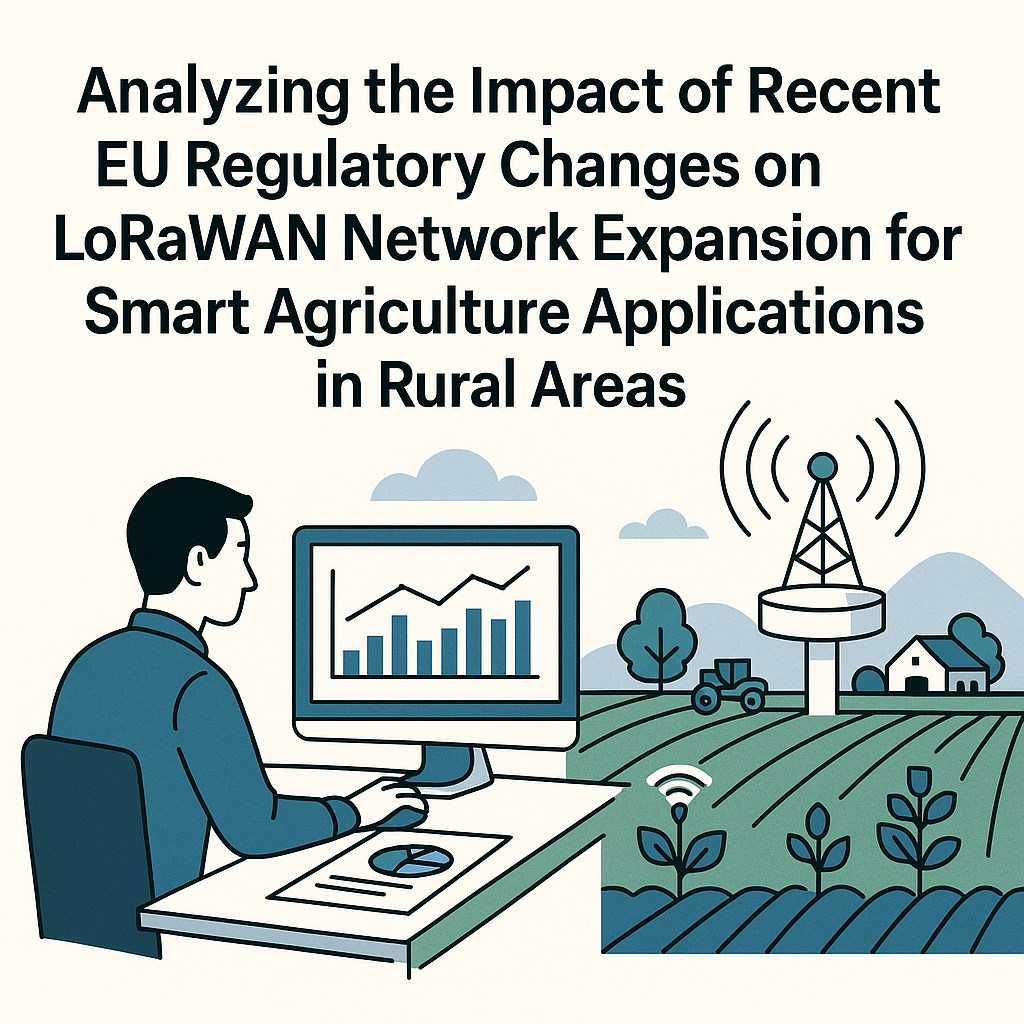Introduction
The landscape of agricultural technology is rapidly evolving, particularly with the integration of Internet of Things (IoT) solutions like LoRaWAN (Long Range Wide Area Network). Recent regulatory changes in the European Union (EU) are poised to significantly influence the expansion of LoRaWAN networks, especially in rural areas. This blog post delves into the implications of these regulatory shifts and their potential impact on smart agriculture applications.
The Role of LoRaWAN in Smart Agriculture
LoRaWAN technology provides a low-power, wide-area networking protocol that allows for the communication of devices over long distances. This capability is crucial for smart agriculture, where monitoring and data collection from various sensors are essential for optimizing farming practices. Some key advantages of LoRaWAN in this sector include:
- Extended Range: LoRaWAN can cover several kilometers, making it ideal for large agricultural fields.
- Low Power Consumption: Devices connected to LoRaWAN can operate for years on a single battery, reducing maintenance costs.
- Scalability: The network can support thousands of devices, allowing farmers to expand their monitoring capabilities as needed.
Recent EU Regulatory Changes
The EU has introduced several regulatory changes aimed at enhancing data privacy, security, and the overall efficiency of IoT networks. These changes include:
- The General Data Protection Regulation (GDPR): This regulation emphasizes the importance of data privacy, requiring that all data collected from agricultural sensors must comply with stringent guidelines.
- Radio Equipment Directive (RED): This directive governs the standards for wireless communication devices, ensuring they meet safety and interoperability requirements.
- European Green Deal: Aimed at promoting sustainable agriculture, this initiative encourages the adoption of IoT technologies to reduce environmental impact.
Impact on LoRaWAN Network Expansion
The recent EU regulatory landscape presents both challenges and opportunities for the expansion of LoRaWAN networks in rural areas. Here are some key impacts:
1. Compliance Costs
The need to ensure compliance with GDPR and RED may lead to increased costs for farmers and IoT solution providers. This can include:
- Investment in data management systems to handle personal data responsibly.
- Upgrading existing equipment to meet new safety and interoperability standards.
2. Enhanced Data Security
While compliance may increase costs, it also enhances data security for farmers, fostering trust in IoT solutions. Secure data transmission and storage can lead to:
- Increased willingness of farmers to adopt smart agriculture technologies.
- Better protection of sensitive information related to farming practices and crop yields.
3. Incentives for Sustainable Practices
The European Green Deal encourages the integration of smart agriculture practices. This can lead to:
- Government grants or subsidies for adopting IoT solutions, easing financial burdens.
- Increased demand for sustainable farming technologies, driving innovation within the sector.
Challenges in Rural Areas
Despite these opportunities, rural areas may face unique challenges in implementing LoRaWAN networks:
- Infrastructure Limitations: Many rural regions may lack the necessary infrastructure to support widespread LoRaWAN deployment.
- Digital Divide: Access to reliable internet services is often limited in rural areas, which can hinder the effectiveness of IoT solutions.
- Awareness and Training: Farmers may require training to understand the benefits and operations of smart agriculture technologies.
Conclusion
The recent EU regulatory changes present a complex landscape for the expansion of LoRaWAN networks in rural areas, particularly within the context of smart agriculture. While compliance with new regulations may pose challenges in terms of costs and infrastructure, the benefits of enhanced data security and incentives for sustainable practices cannot be overlooked. As farmers adapt to these changes, the potential for smart agriculture applications will likely grow, leading to more efficient and sustainable farming practices in the long term. Embracing these technologies will be crucial for the future of agriculture in Europe, particularly as the demand for sustainable food production continues to rise.



